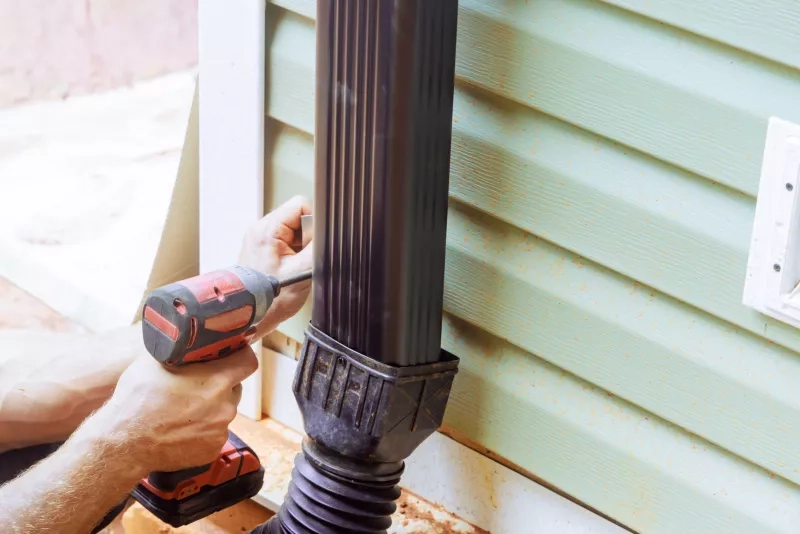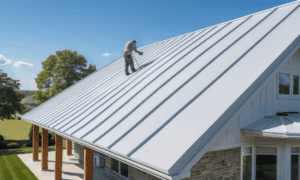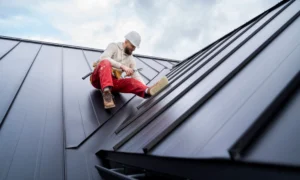Substantial destruction and financial losses are a direct result of flooding, which poses a significant hazard to your property. It is crucial to know how to protect a property against the risk of flooding. This guide will provide concrete suggestions to help protect your home from flooding.
Assessing Flood Risk
It is crucial to know how to protect your home from flooding. Risk assessment is a vital step before taking any precautions. To determine the likelihood of their home flooding, homeowners should consult local flood maps and contact local officials. By understanding these risks, homeowners can make better decisions about how to protect themselves against flooding.
Home Modifications
Structural fixes and home improvements can also help reduce the impact of flooding. One of the most common ways to do this is by elevating the home’s foundation. It is also helpful to raise electrical outlets, switches, and larger appliances above flood levels. Floodwater will back up into the home through the plumbing unless check valves are installed. To fortify the protection against water infiltration, basement walls can be sealed with a waterproof compound.
Landscaping Adjustments
Directing water away from the home and landscaping is a huge factor in this. Another way to avoid pooling water is to grade the yard so that it slopes away from the foundation. Native plants that prefer wet conditions can improve drainage. Homeowners can also install rain gardens to absorb excess water. They can also help in collecting runoff, reducing the risk if strategically placed rain barrels are utilized.
Installing Flood Barriers
Flood barriers are a means of keeping the water out. They are usually made from sandbags, which provide a temporary solution for combating floods. For a more permanent solution, you can fit flood boards on the doors and windows. These barriers can be deployed within a very short time when needed. Automatic floodgates can also provide additional peace of mind, automatically opening when water levels increase.
Maintaining Gutters and Drains
Proper maintenance of gutters and drains is a crucial aspect of flood prevention. Blockages will lead to water pouring over the sides and seeping into the foundation of the home. Keeping gutters and downspouts unobstructed allows rainwater to flow away quickly. Homeowners should also check to ensure that the storm drains around their house are functioning properly.
Insurance Considerations
Flood insurance is a worthwhile investment, considering that standard homeowner insurance typically does not cover flood damage. Homeowners should assess their coverage and select a policy that meets their needs. Being aware of what a flood insurance policy covers and what it doesn’t can give peace of mind that the homeowner is adequately insured.
Creating an Emergency Plan
It is essential to have an emergency plan in place for flooding to ensure the safety of people during such an event. Homeowners should know how to escape and how to communicate with their family. Creating an emergency kit is essential. Preparing an emergency kit and stocking up on some basic supplies, including nonperishable food, water, and medical supplies, is recommended. By consistently reviewing and updating this plan, you ensure that you are prepared in the event of a disaster.
Community Preparedness
Partnerships with local communities improve flood preparedness. Community flood planning meetings are open to homeowners so they can become informed about the local efforts. Working with neighbors to solve mutual problems, such as drainage issues, might lead to a joint solution.
Leveraging Technology
Technology has evolved to monitor and mitigate flood hazards. Homeowners can install water sensors and place them in areas of the house where flooding is likely to occur. These devices alert authorities when flooding occurs, allowing for a swift response. For instance, weather apps can provide people with timely updates and alerts, enabling them to stay informed about potential floods. Learn how to use technology, as it significantly optimizes your chances of avoiding and minimizing damage, ensuring your safety.
Conclusion
Floodproofing a home requires thoughtful consideration and planning. Floods can be damaging but are also detectable in many cases. Modifying distress signals and increasing awareness of detection can mitigate the risk to a certain extent, depending on the level of detection and modification implemented. These steps help protect property as well as provide peace of mind in the event of potential water hazards. However, by working together as a community, while each of us does our part, flooding can be reduced as a threat.



































